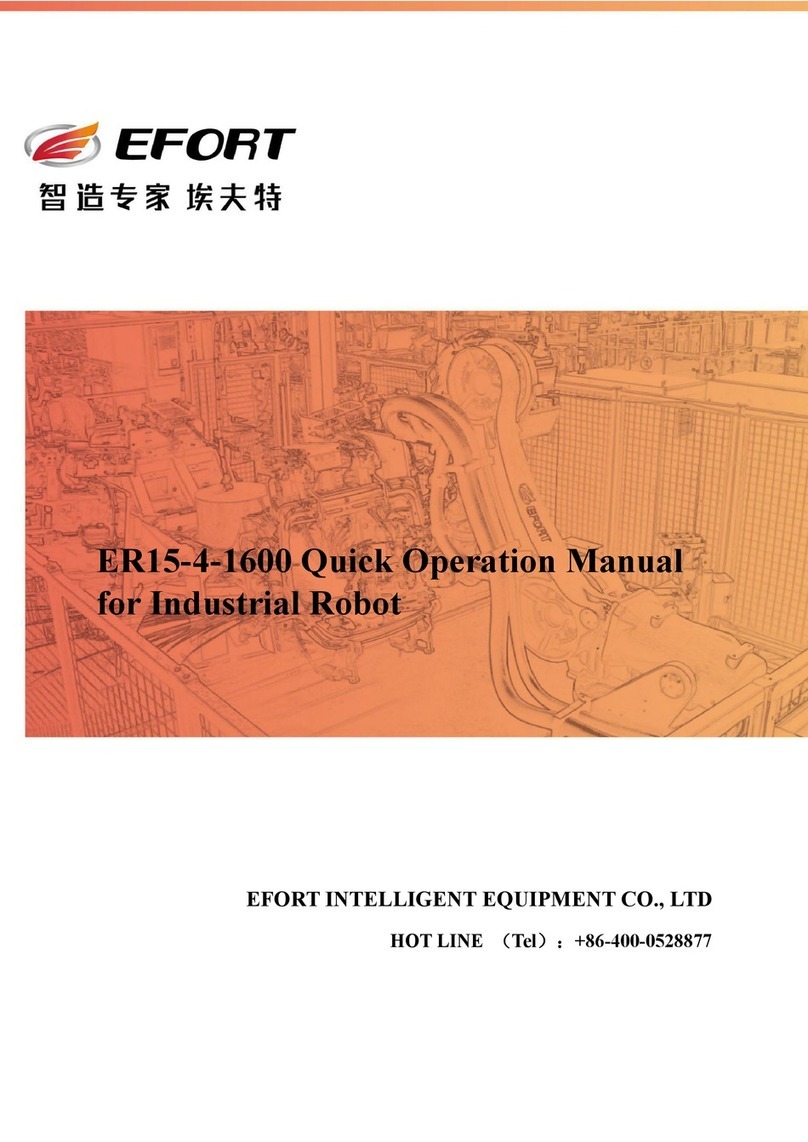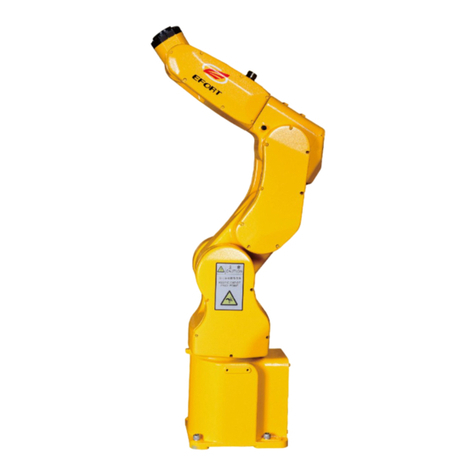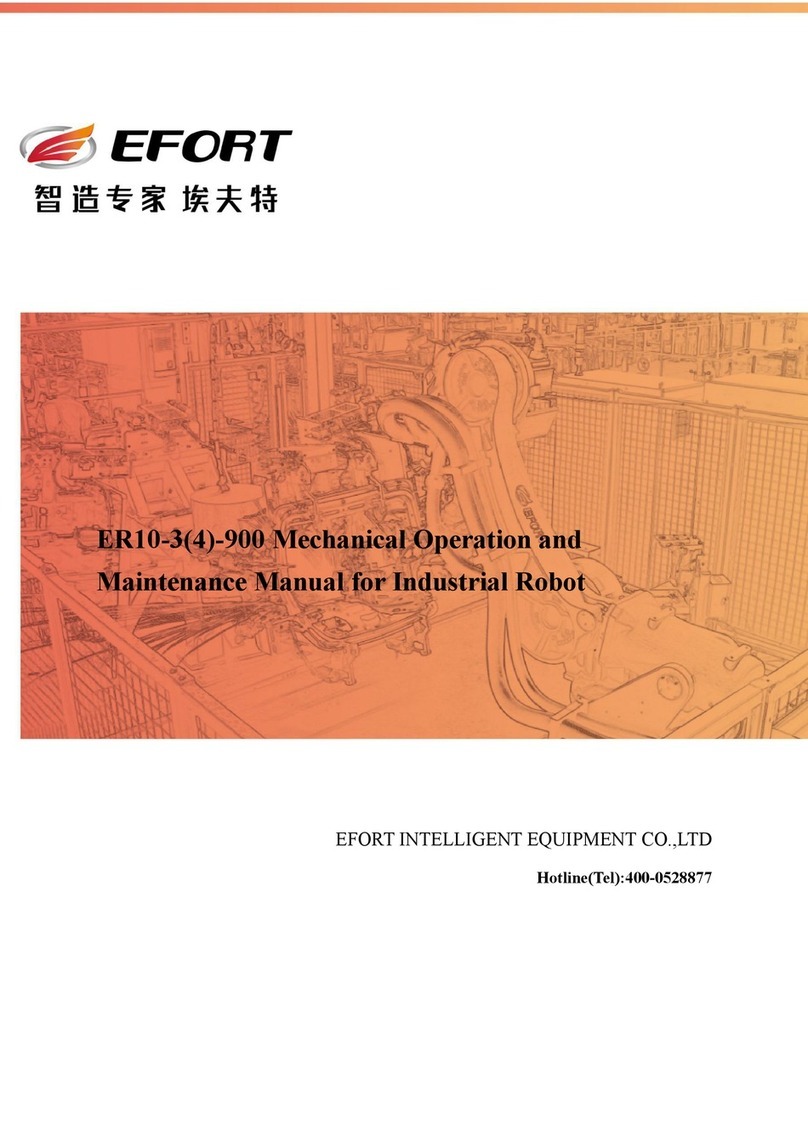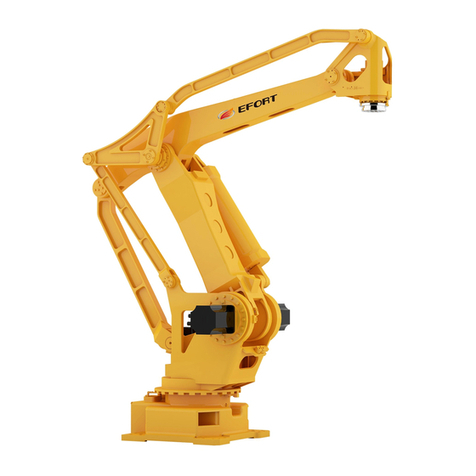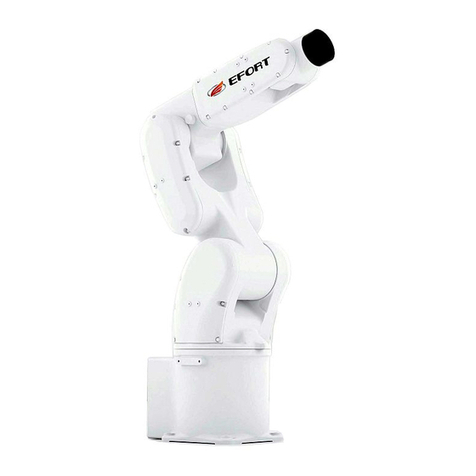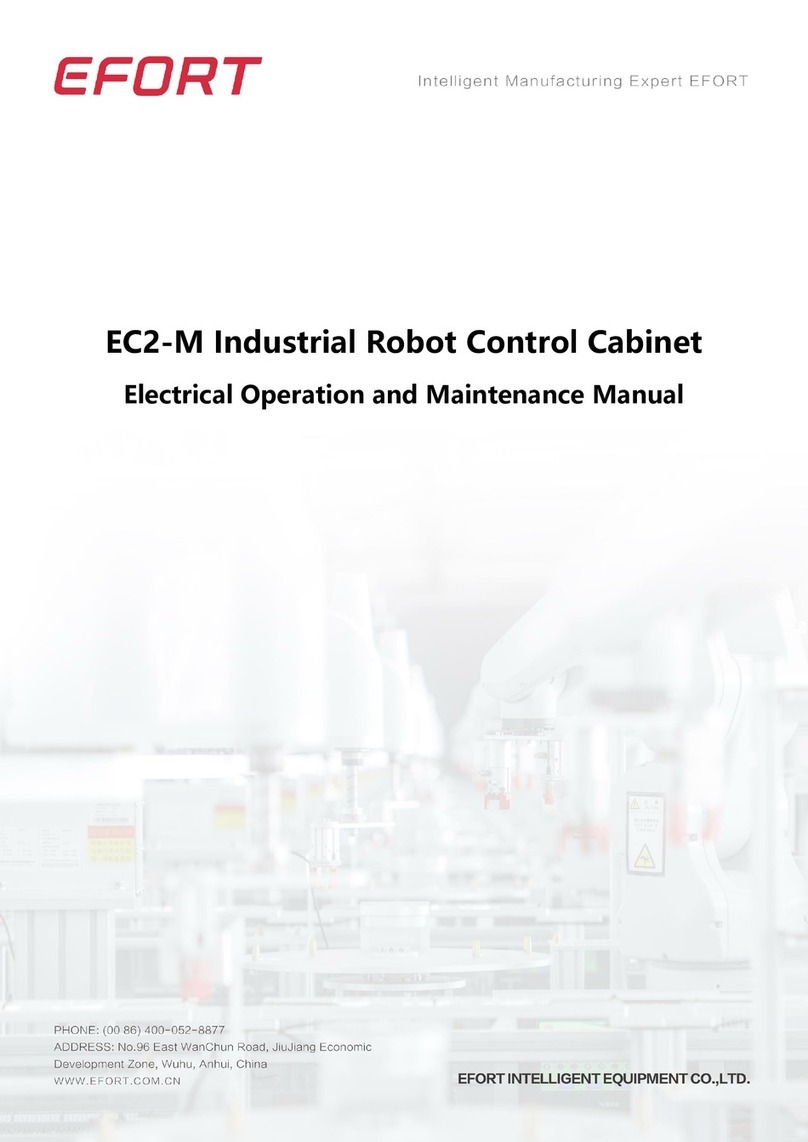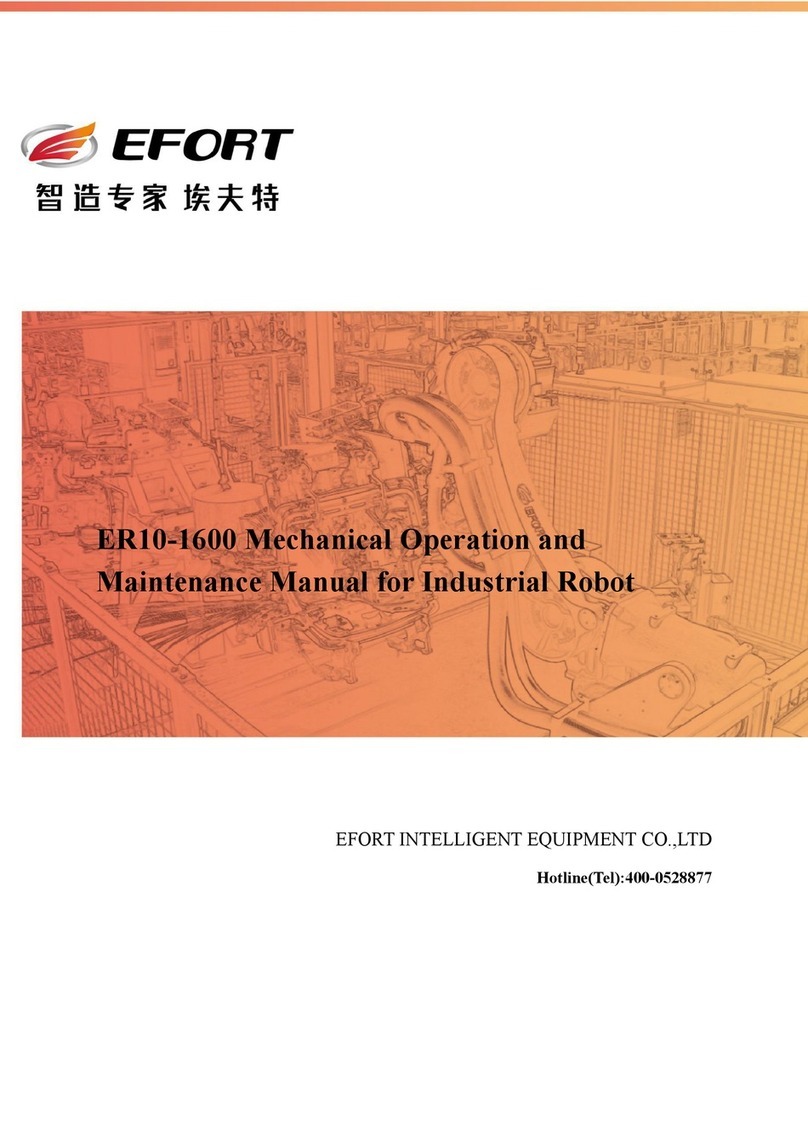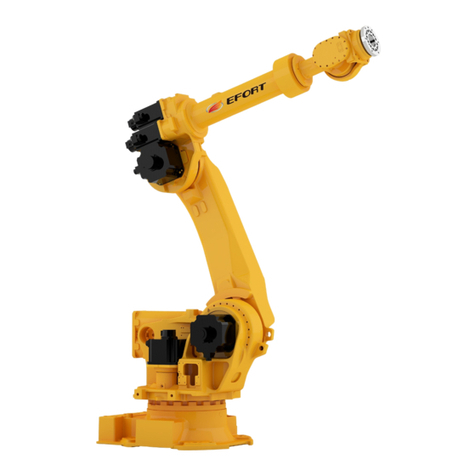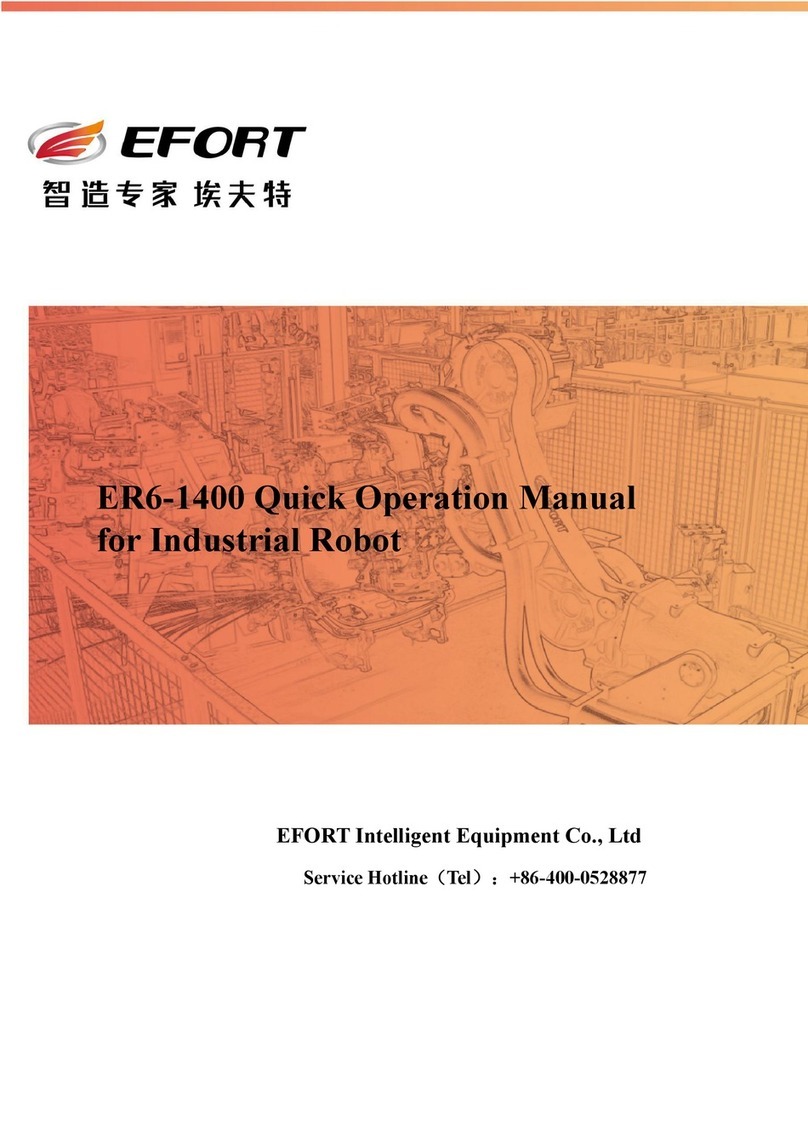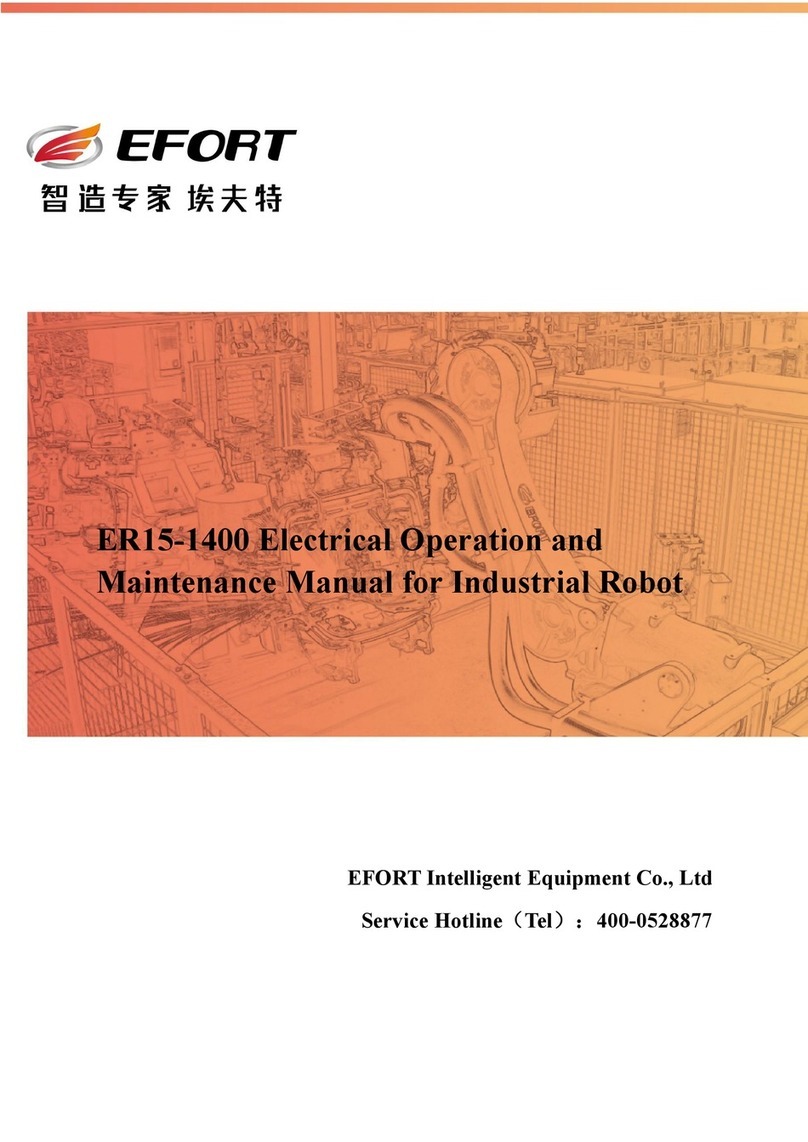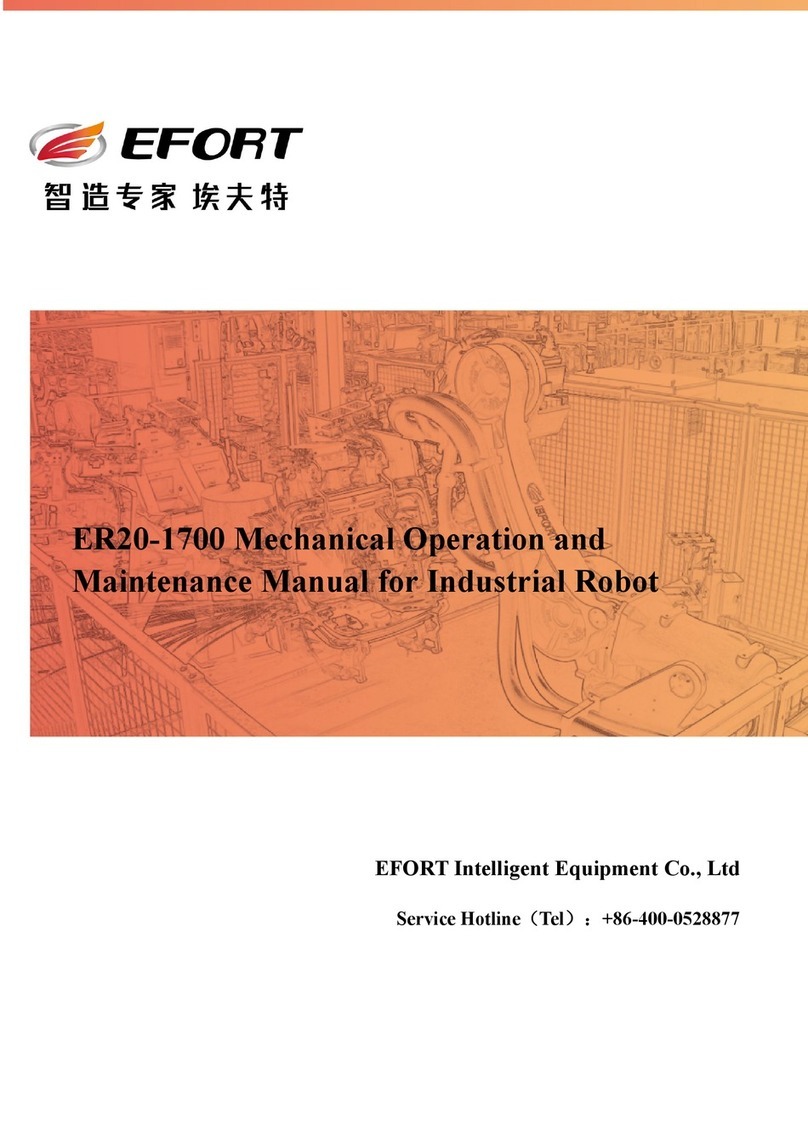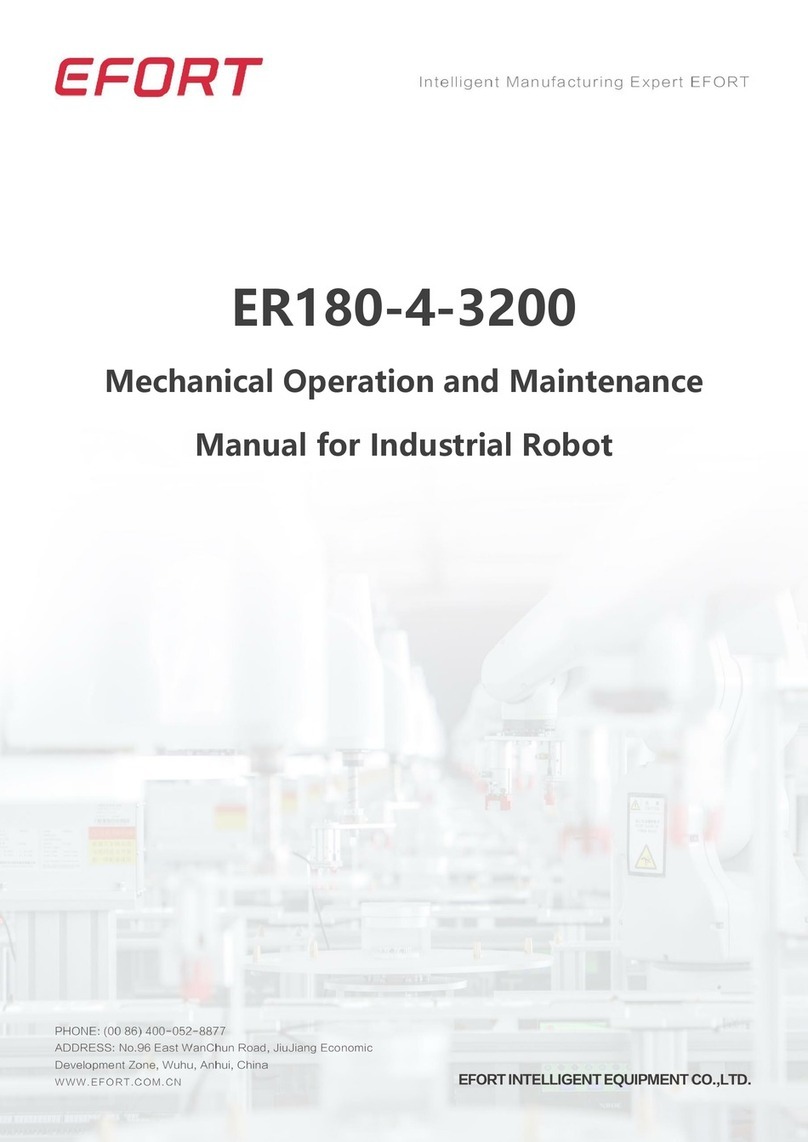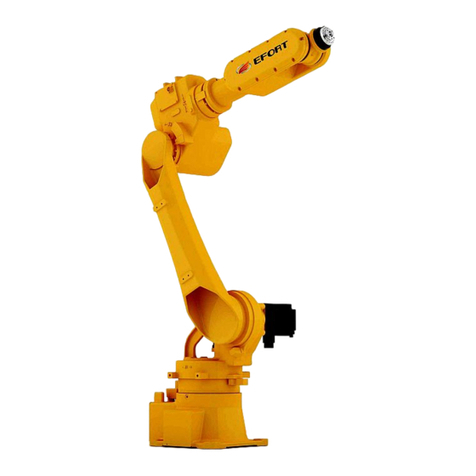
Mechanical Operation and Maintenance Manual for ER20-1100 Industrial Robot
3.2.1 Setting of safety bar........................................................................................... 22
3.2.2 Robot installation method.................................................................................. 23
3.2.3 Ground installation.............................................................................................23
3.2.4 Bracket installation.............................................................................................25
3.2.5 Upside down installation....................................................................................25
3.3 INSTALLATION SITE AND ENVIRONMENT.......................................................................26
3.4 INTEGRATED APPLICATION INSTALLATION INTERFACE.................................................. 26
3.4.1 Interface of end load mounting flange............................................................... 26
3.4.2 Interface of peripheral installation..................................................................... 27
3.4.3 Terminal definition of wrist I/O signal cable..................................................... 28
3.4.4 Position of pneumatic interface and signal interface......................................... 28
CHAPTER 4 REPAIR AND MAINTENANCE...................................................................30
4.1 PREVENTIVE MAINTENANCE........................................................................................ 30
4.1.1 Routine Check....................................................................................................30
4.1.2 Quarterly check.................................................................................................. 30
4.1.3 Annual check......................................................................................................31
4.1.4 Every three-year check.......................................................................................31
4.2 REPAIR AND MAINTENANCE FOR MAIN BOLTS.............................................................. 31
4.3 CHANGE LUBRICANT.....................................................................................................32
4.3.1 Demand capacity of lubricant............................................................................ 32
4.3.2 Azimuth of axis when lubricant to be replaced..................................................32
4.3.3 Process for replacing lubricant in J1~J4 axes reducer and wrist part................ 32
4.3.4 Release the residue pressure in lubricant cavity................................................ 34
4.4 MAINTENANCE OF TIMING BELT................................................................................... 34
4.4.1 Tightening the timing belt.................................................................................. 35
4.4.2 Replacement of timing belt................................................................................ 36
4.5 ROBOT MAINTENANCE AND WORKING AREA................................................................36
4.5.1 The safety conditions required for working area............................................... 36
